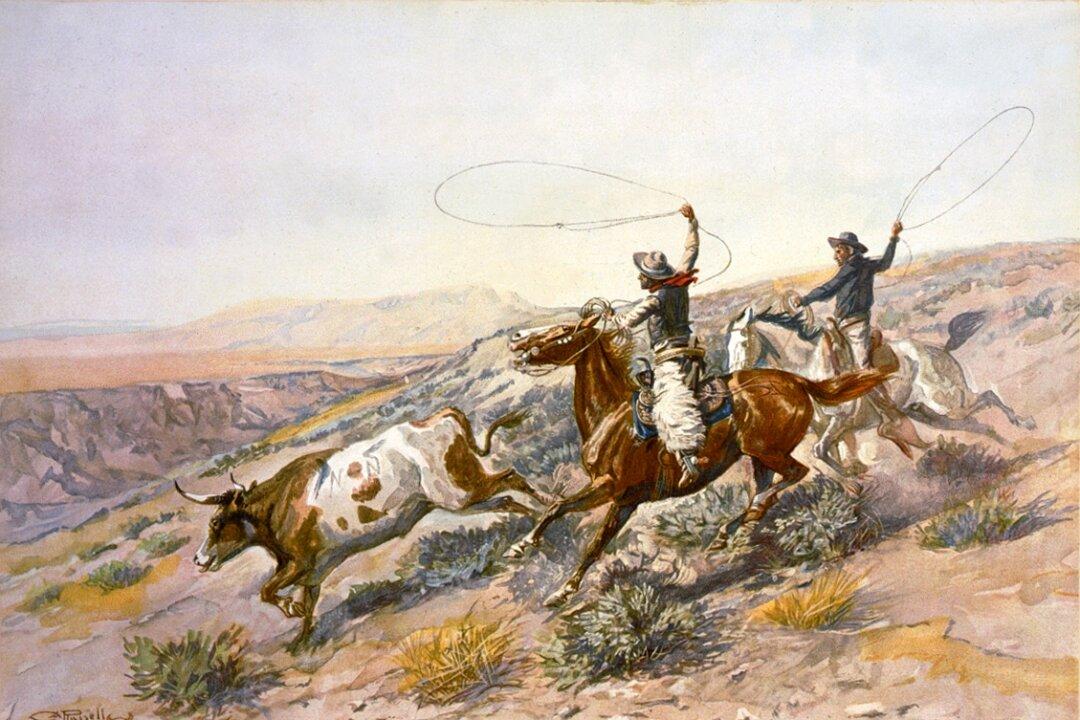Charles Marion Russell (1864–1926) was born in St. Louis and grew up with a hankering for the cowboy life. By the time he was born, America had been undergoing a massive expansion westward since the Mexican-American War victory and the discovery of gold in California, both taking place in 1848.
By the time he turned 16, he moved to the the Judith Basin of central Montana to become a working cowboy. His first gig was as a shepherd on a sheep farm. It was not a success, and he quit. Without grub or money, he got on his horse and strode along the Judith River. The river would lead him to good luck.






